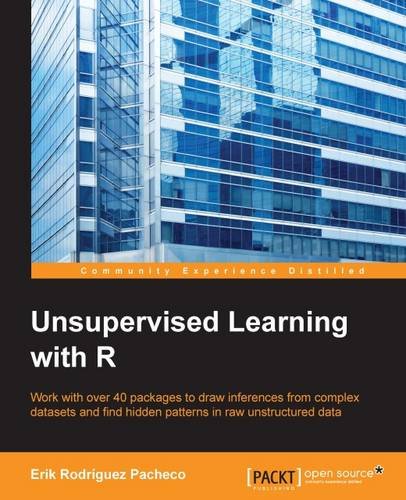

Most ebook files are in PDF format, so you can easily read them using various software such as Foxit Reader or directly on the Google Chrome browser.
Some ebook files are released by publishers in other formats such as .awz, .mobi, .epub, .fb2, etc. You may need to install specific software to read these formats on mobile/PC, such as Calibre.
Please read the tutorial at this link: https://ebookbell.com/faq
We offer FREE conversion to the popular formats you request; however, this may take some time. Therefore, right after payment, please email us, and we will try to provide the service as quickly as possible.
For some exceptional file formats or broken links (if any), please refrain from opening any disputes. Instead, email us first, and we will try to assist within a maximum of 6 hours.
EbookBell Team

4.1
100 reviewsWork with over 40 packages to draw inferences from complex datasets and find hidden patterns in raw unstructured data
About This BookThis book is intended for professionals who are interested in data analysis using unsupervised learning techniques, as well as data analysts, statisticians, and data scientists seeking to learn to use R to apply data mining techniques. Knowledge of R, machine learning, and mathematics would help, but are not a strict requirement.
What You Will LearnThe R Project for Statistical Computing provides an excellent platform to tackle data processing, data manipulation, modeling, and presentation. The capabilities of this language, its freedom of use, and a very active community of users makes R one of the best tools to learn and implement unsupervised learning.
If you are new to R or want to learn about unsupervised learning, this book is for you. Packed with critical information, this book will guide you through a conceptual explanation and practical examples programmed directly into the R console.
Starting from the beginning, this book introduces you to unsupervised learning and provides a high-level introduction to the topic. We quickly move on to discuss the application of key concepts and techniques for exploratory data analysis. The book then teaches you to identify groups with the help of clustering methods or building association rules. Finally, it provides alternatives for the treatment of high-dimensional datasets, as well as using dimensionality reduction techniques and feature selection techniques.
By the end of this book, you will be able to implement unsupervised learning and various approaches associated with it in real-world projects.
Style and approachThis book takes a step-by-step approach to unsupervised learning concepts and tools, explained in a conversational and easy-to-follow style. Each topic is explained sequentially, explaining the theory and then putting it into practice by using specialized R packages for each topic.